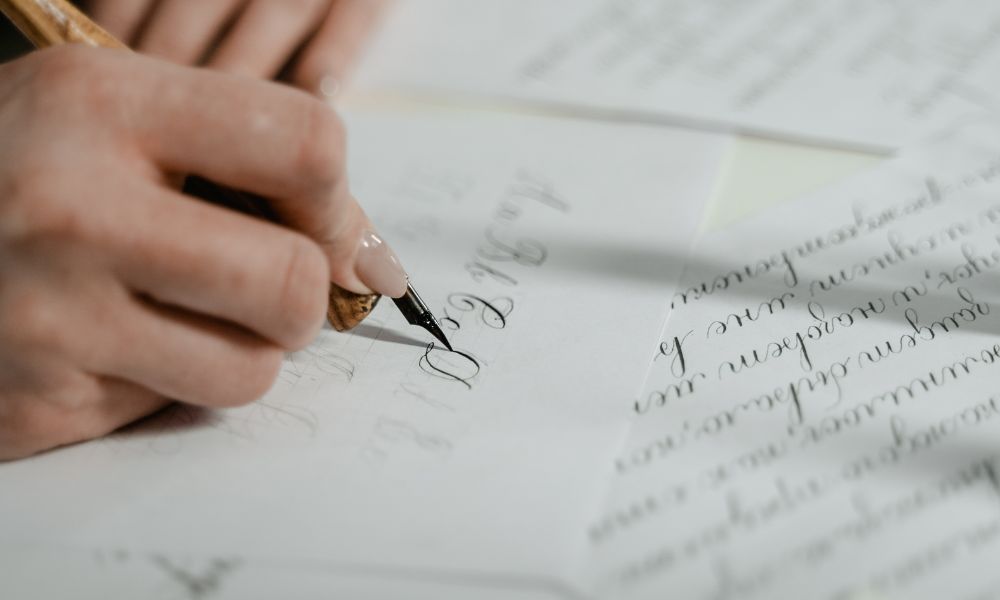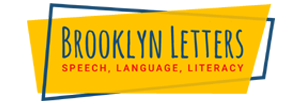Mastering Penmanship: The Art of Practicing Handwriting

Why Practice Penmanship?
In today’s digital age, where keyboards and touchscreens dominate our communication, the art of penmanship may be fading away. However, the importance of good handwriting should not be overlooked. Handwriting is not just a functional skill but a form of self-expression and a reflection of our personality. One effective way to improve and refine your handwriting is through regular practice. In this blog, we will explore the art of practicing penmanship and how it can benefit you in various aspects of life.
What Makes Good Penmanship?
Good penmanship is characterized by several key elements contributing to legibility, aesthetics, and overall quality. Here are the factors that make up good penmanship:
- Legibility: Legibility refers to how easily your writing can be read and understood. Each letter should be formed clearly and distinctly, allowing readers to recognize them without confusion. Legible penmanship ensures that others can easily comprehend your message.
- Consistency: Consistency is crucial in penmanship. It involves maintaining uniformity in letter size, shape, and spacing throughout your writing. Consistent penmanship creates a visually pleasing and cohesive appearance.
- Letter Formation: Proper letter formation involves correctly executing each letter’s strokes and curves. Paying attention to the starting and ending points, angles, and proportions of letters contributes to neat and well-formed handwriting.
- Spacing: Appropriate spacing between letters, words, and lines is important for readability. Adequate spacing ensures that the text does not appear cramped or overcrowded, allowing each word to be clearly distinguished.
- Alignment: Proper alignment refers to maintaining a straight and even baseline for your writing. Words and sentences should align consistently, avoiding excessive slanting or uneven placement on the page.
- Slant: Slant refers to the angle at which your letters lean. A slight slant, whether forward or backward, can add elegance and fluidity to your handwriting. Consistency in the slant throughout your writing creates a harmonious appearance.
- Rhythm and Flow: Good penmanship exhibits a smooth and rhythmic flow. The strokes and connections between letters should be fluid and effortless, creating an aesthetically pleasing rhythm as you write.
- Pressure Control: Proper control over the pressure applied to the writing instrument is essential for good penmanship. Applying consistent pressure results in uniform, well-defined lines, while excessive pressure can cause the ink to bleed or distort the letterforms.
- Individual Style: While adhering to the fundamentals, good penmanship allows for personal style and flair. Your handwriting should reflect your unique personality and expression, adding a touch of individuality to your writing.
- Practice and Mastery: Good penmanship is attainable through dedicated practice and mastery of the skills mentioned above. Regular practice, attention to detail, and a focus on improvement are essential for refining and maintaining good penmanship.
What Causes Poor Penmanship?
Poor penmanship can be caused by a variety of factors, including:
- Insufficient practice and lack of regular handwriting exercises.
- Incorrect grip and poor posture while writing.
- Weak fine motor skills, which affect hand control and coordination.
- Lack of knowledge or understanding of proper letter formation.
- Visual perception difficulties, making it challenging to align letters and maintain consistent spacing.
- Physical challenges, such as motor coordination disorders or muscle weakness.
- Lack of attention and focus during writing tasks.
- Emotional factors, such as stress, anxiety, or low self-confidence, affect writing fluency.
- Environmental factors, including uncomfortable seating or distractions while writing.
It is important to note that poor penmanship can be a combination of several factors, and each individual may have unique challenges. Addressing the underlying causes and providing targeted interventions, such as handwriting exercises, fine motor skill development, ergonomic adjustments, and strategies for focus and attention, can help improve penmanship and promote legibility and writing confidence.
Tips to Improve Your Penmanship
Improving your penmanship is a worthwhile endeavor that can enhance the legibility and aesthetics of your handwriting. Here are some practical tips to help you improve your penmanship:
- Practice Regularly: Consistent practice is key to improving your penmanship. Set aside dedicated time each day or week to practice writing. The more you practice, the more you refine your skills and develop muscle memory for proper letter formation.
- Maintain Good Posture and Grip: Sit upright with a comfortable writing posture. Hold the pen or pencil in a relaxed grip that allows for control and flexibility. Avoid gripping too tightly, as it can hinder smooth and fluid movement.
- Start with Basic Strokes and Letter Forms: Begin your practice by focusing on basic strokes and letter forms. Mastering these foundational elements will provide a strong basis for developing your overall penmanship. Pay attention to stroke direction, shape, and proportions.
- Slow Down: Avoid rushing when writing. Slow down your pace to ensure greater accuracy and control. This allows you to focus on forming each letter carefully and consistently.
- Pay Attention to Letter Spacing and Alignment: Maintain consistent spacing between letters and words. Avoid crowding or stretching them too far apart. Aim for even alignment, keeping your writing straight and parallel to the lines on the paper.
- Use Lined Paper or Guides: Utilize lined paper or writing guides to help maintain consistent letter size and slant. These aids can assist in developing proper spacing and alignment.
- Experiment with Different Writing Instruments: Try different types of pens or pencils to find the one that feels most comfortable and allows for smooth writing. Some individuals may see that certain writing instruments improve their penmanship.
- Copy and Trace Samples: Find samples of handwriting you admire and practice copying them. This exercise helps train your hand to replicate well-formed letters and promotes muscle memory. Additionally, tracing letters or words can aid in developing proper letter shapes and stroke patterns.
- Seek Feedback and Guidance: Ask for feedback from others or seek guidance from a handwriting expert. They can provide constructive suggestions, point out areas for improvement, and offer specific techniques tailored to your needs.
- Be Patient and Persistent: Improving penmanship takes time and patience. Embrace the process and be persistent in your practice. Celebrate even small improvements along the way and maintain a positive attitude.
Remember, everyone’s handwriting is unique, and the goal is to develop a legible and consistent style that suits you. With practice, dedication, and attention to detail, you can enhance your penmanship and take pride in the beauty of your written expression.

Benefits of Having Good Penmanship
Having good penmanship offers numerous benefits that extend beyond simply writing neatly. Clear and legible handwriting ensures your message is easily understood, avoiding misunderstandings. It conveys professionalism and attention to detail, making a positive impression in various settings. Handwritten communication with good penmanship adds a personal touch and leaves a lasting impression on recipients. Research suggests that writing by hand enhances cognitive function and creativity. Penmanship serves as a form of self-expression, reflecting your personality and individuality.
Good penmanship can positively impact performance and reading comprehension in an academic context. It can also be an artistic outlet, allowing you to explore different lettering styles and decorative techniques. Good penmanship brings personal satisfaction, boosting self-confidence and a sense of accomplishment. In a digital age, good penmanship maintains its value, providing a balance to the digital world and preserving the skill of writing by hand.
How Can a Handwriting Tutor Help Improve Penmanship?
A handwriting tutor can play a crucial role in helping individuals improve their penmanship. Here are some ways a handwriting tutor can assist in enhancing penmanship:
- Individualized Instruction: A handwriting tutor can provide personalized instruction tailored to the learner’s specific needs. They can assess the individual’s current handwriting skills, identify areas for improvement, and develop a customized plan to address those areas effectively.
- Correcting Technique: A handwriting tutor can teach proper grip, posture, and hand positioning, ensuring that the learner is using the correct technique. This helps develop better control and fluidity while writing, leading to improved penmanship.
- Letter Formation and Consistency: The tutor can focus on teaching the correct formation of letters, including starting points, stroke directions, and proportionate sizing. They can guide the learner to ensure consistency in letter shapes and spacing, resulting in neater and more uniform handwriting.
- Practice Exercises: Handwriting tutors can provide various practice exercises and drills to reinforce proper letter formation and improve muscle memory. These exercises may include tracing letters, copying words or sentences, and engaging in specific drills targeting problem areas.
- Fine Motor Skill Development: Handwriting is closely linked to fine motor skills. A tutor can incorporate activities and exercises that strengthen the muscles in the hands and fingers, improving agility and control. These activities include finger exercises, using manipulative tools, or engaging in fine motor skill games.
- Feedback and Guidance: A handwriting tutor can offer constructive feedback on the learner’s writing, pointing out areas for improvement and providing guidance on addressing specific issues. They can identify common mistakes or habits that hinder legibility and provide strategies to overcome them.
- Motivation and Encouragement: A handwriting tutor serves as a source of motivation and encouragement throughout the learning process. They can recognize progress, celebrate achievements, and help the learner maintain a positive attitude towards penmanship improvement.
- Customized Resources: Tutors can provide customized resources such as handwriting worksheets, letter guides, or writing tools that suit the learner’s needs. These resources can assist in practicing specific skills and reinforce proper penmanship techniques.
- Support for Special Needs: Handwriting tutors with experience working with special needs learners can provide targeted interventions and accommodations. They can adapt teaching methods to accommodate different learning styles, address specific challenges, and foster success in penmanship.
- Continued Guidance and Progress Monitoring: A handwriting tutor can provide ongoing support, guiding the learner through improving penmanship. They can monitor progress, adjust instruction, and provide additional guidance to ensure continued improvement.
By working closely with a handwriting tutor, individuals can receive the specialized instruction, guidance, and support necessary to enhance their penmanship skills effectively. The tutor’s expertise and personalized approach can significantly improve handwriting legibility, control, and overall writing confidence.
Our handwriting tutors specialize in individualized handwriting tutoring for elementary school students. Our handwriting instruction is tailored to meet your child’s needs and addresses key areas that need extra reinforcement. Our handwriting tutors utilize the Handwriting Without Tears® curriculum, which uses multisensory strategies to teach handwriting to students in Pre-K onwards. Email us today.
Chat with Us Today!
Our Literacy Specialists work on decoding, encoding (spelling), reading comprehension, handwriting and writing skills.
FREE CONSULTATION!!!
Call: (347) 394-3485, Text: (917) 426-8880
Email: [email protected]
(we respond to email right away!)
Craig Selinger
Latest posts by Craig Selinger (see all)
- How to Become a Speech Therapist in New York - April 28, 2024
- NYC Middle School Transition Support Group - April 7, 2024
- Understanding Toddler Neurodevelopmental Evaluation - April 3, 2024













